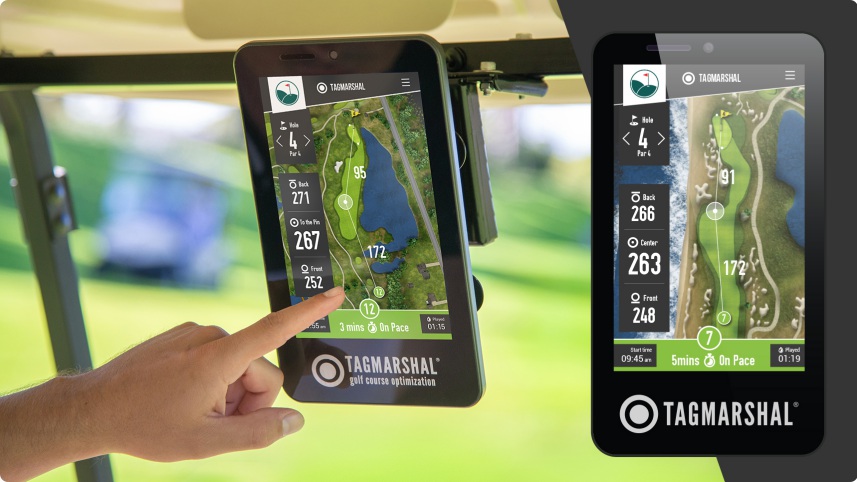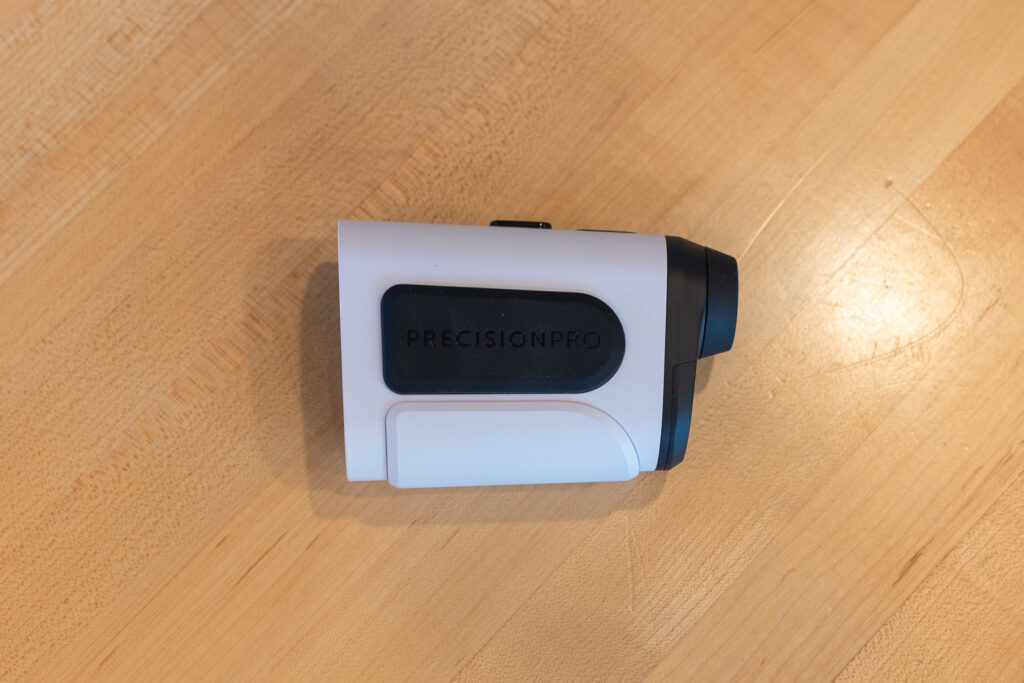
Golf Technology: How GPS and Range Finders Are Changing the Game
Golf has always been a game of precision and strategy, but advancements in technology have provided players with tools to enhance their performance on the course.
GPS and range finders have become essential gadgets for many golfers, offering accurate measurements and detailed course information.
This article explores how GPS and range finders work in golf, the benefits they provide, and the different types of devices available.
We also discuss the impact of golf technology on the game, controversies surrounding their use, and the future of these innovative tools.
Whether you’re a seasoned pro or a casual player, understanding how technology is changing the game of golf is essential for staying ahead of the curve.
What is GPS in Golf?
GPS technology in golf refers to the use of Global Positioning System to accurately measure distances on a golf course. It has revolutionized the way golfers navigate the course and plan their shots.
By utilizing satellite signals, GPS devices can pinpoint the exact location of the golf ball and provide golfers with precise yardages to various points on the course, including hazards and greens. This real-time data allows players to make informed decisions about club selection and shot strategy. GPS technology plays a crucial role in golf course mapping, aiding in the creation of detailed digital maps that offer insights into the layout of the course. These devices have significantly enhanced accuracy and improved performance for golfers of all skill levels, leading to more strategic and efficient play.
How Does GPS Work in Golf?
GPS works in golf by utilizing satellite signals to pinpoint the exact location of the player on the golf course. This data is then processed to provide accurate yardages and real-time navigation assistance.
The satellite signals are received by the GPS device carried by the golfer, which communicates with multiple satellites to triangulate the position with impressive accuracy. This allows golfers to precisely calculate distances to hazards, bunkers, and the green, aiding in strategic decision-making during their rounds.
The real-time updates provided by GPS technology help players adjust their game on the fly, adapting to changing course conditions and improving overall performance. The seamless integration of satellite technology into golf has revolutionized the way players approach and navigate the course, enhancing the overall experience for golf enthusiasts.
What Are the Benefits of GPS in Golf?
The benefits of GPS in golf extend to improved performance, enhanced course management, and a better overall experience for golfers. It assists players in making informed decisions based on accurate yardages.
- By providing real-time data on distances to hazards, doglegs, and greens, GPS technology allows players to strategize their shots effectively. This not only reduces the risk of making errors in club selection but also enhances the precision of each swing.
- GPS devices can track shot distances, providing valuable insights into a player’s strengths and areas for improvement. This data-driven approach empowers golfers to refine their skills and elevate their game to the next level.
What Are the Different Types of GPS Devices Used in Golf?
Various types of GPS devices are utilized in golf, including wearable devices, handheld GPS units, and integrated golf GPS systems. These devices offer different features to cater to diverse golfer preferences.
- Wearable devices have become increasingly popular among golfers for their convenience and ease of use. These devices are usually worn on the wrist or clipped onto clothing, providing real-time yardage information at a glance.
- On the other hand, handheld GPS units offer more detailed mapping capabilities and precise distance measurements to hazards and greens. Advanced golf GPS systems, on the other hand, combine the convenience of wearables with the extensive features of handheld units, offering features such as shot tracking, course management tools, and interactive touchscreens for a more immersive golfing experience.
What is a Range Finder in Golf?
A range finder in golf is a device used to precisely measure distances on the golf course, providing golfers with accurate yardages for improved shot selection and performance.
This handy tool plays a crucial role in aiding golfers in making informed decisions about club selection and shot strategy. By eliminating guesswork and estimating distances accurately, range finders help players hit their targets with more confidence and precision. With advancements in technology, modern range finders offer features like slope adjustment, which further enhance their functionality by considering elevation changes and providing adjusted yardages. Using a range finder can significantly improve a golfer’s consistency and overall performance on the course.
How Does a Range Finder Work in Golf?
A range finder operates in golf by emitting laser beams or using GPS technology to determine the exact distance between the player and a target point on the golf course. It identifies course features for accurate shot planning.
By precisely measuring the distance to the pin, hazards, or other points of interest, golfers can make informed decisions on club selection and shot placement. These devices offer real-time data on slopes, helping players adjust their shots to account for elevation changes. Some range finders even provide suggestions based on previous shots or common golfer tendencies, assisting in strategy development during the game.
What Are the Benefits of Using a Range Finder in Golf?
Using a range finder in golf offers benefits such as precise shot tracking, improved fairway accuracy, and enhanced understanding of the course layout. It empowers golfers to make confident decisions.
By accurately measuring distances to various points on the course, range finders allow golfers to analyze their shots with precision. This data not only helps in selecting the right club for the shot but also aids in strategizing the gameplay based on the course’s layout. The enhanced accuracy on fairways achieved through range finders leads to improved performance and more consistent results, ultimately boosting a golfer’s confidence in their decision-making process during the game.
What Are the Different Types of Range Finders Used in Golf?
Golfers utilize various types of range finders, including laser rangefinders, GPS rangefinders, and advanced models that analyze shot dispersion and provide detailed golf metrics. These devices cater to different player needs.
- Laser rangefinders are popular among golfers for their precise distance measurements to targets on the course. They use a laser beam to accurately determine the distance to hazards, flags, or other objects.
- On the other hand, GPS rangefinders rely on satellites to provide accurate yardages and offer features like hole mapping and course guides. Advanced models with shot dispersion analysis capabilities help golfers understand their game better by displaying data on their shot patterns and tendencies.
These high-tech tools have revolutionized how players strategize and improve their performances on the golf course.
How is Golf Technology Changing the Game?
Golf technology is revolutionizing the game by introducing innovative advancements that are reshaping the golf industry. From improved data analytics to wearable devices, technology is enhancing the way golfers play and strategize.
These technological developments have not only elevated the performance aspect of the game but also provided golf enthusiasts with personalized insights into their gameplay. Players can now track their swings, analyze their shots, and even receive real-time feedback on their performance. The integration of wearable devices like smartwatches and specialized golfing trackers has made it easier for golfers to monitor their progress and make data-driven decisions on the course. This shift towards data-driven strategies and interactive experiences is redefining the traditional notions of golf and paving the way for a more dynamic and engaging sport.
What Are the Advancements in Golf Technology?
Advancements in golf technology encompass a wide range of offerings, including cutting-edge golf accessories, innovative software solutions, and products from leading golf tech companies. These developments are enhancing the overall golf experience.
For instance, golfers can now utilize smart wearables that track their swing movements, analyze their performance metrics, and provide real-time feedback for improvement. Advanced simulators and augmented reality applications are revolutionizing how golfers practice and engage with the game. Innovative club customization tools allow players to fine-tune their equipment based on personalized data, enhancing precision and consistency in their shots. With the continuous evolution of technology in golf, players are not only improving their skills but also enjoying a more immersive and personalized golfing experience.
How is Golf Technology Improving the Player Experience?
Golf technology is enhancing the player experience through wearable devices that offer insights into green reading, swing analysis, and personalized performance metrics. These tools empower golfers to optimize their gameplay.
By utilizing these innovative wearable devices, golfers can give themselves a competitive edge on the course. For instance, real-time feedback on swing mechanics provided by these devices allows players to make immediate adjustments and refine their technique. Precise data on factors like distance, shot dispersion, and club speed enables individuals to tailor their training and playing strategies for improved consistency and accuracy. This integration of technology not only enhances the overall golfing experience but also contributes to the continuous development of players as they strive for excellence.
What is the Controversies Surrounding Golf Technology?
Controversies in golf technology center around concerns regarding the perceived competitive edge gained by players, the impact on scoring improvements, and the evolving trends that shape the game’s future.
Advancements in golf technology have sparked debates about the influence of equipment on player performance, with some arguing that certain tech gives an unfair advantage. Scoring trends have been affected as well, as new tools and technologies have led to lower scores becoming more common, altering the traditional standards of the game. These changes have stirred conversations about the balance between skill and technology, raising questions about how far innovation should go before it fundamentally changes the essence of golf.
Are GPS and Range Finders Legal in Professional Golf?
The legality of GPS devices and range finders in professional golf has sparked debates within the industry. While some argue they provide an unfair advantage, others view them as essential tools for accurate play during tournaments.
Advocates for the use of GPS devices and range finders highlight how these technologies can expedite the game by providing precise distances to hazards and flagsticks, ultimately helping players make informed decisions swiftly.
On the contrary, opponents express concerns about the potential disruption to the traditional skill-based nature of the sport, citing instances where reliance on such devices could undermine the mental and strategic components of professional golf.
This ongoing dialogue within the golf community underscores the delicate balance between embracing modern advancements and safeguarding the integrity of competitive play.
Do GPS and Range Finders Give an Unfair Advantage?
The question of whether GPS devices and range finders offer an unfair advantage in golf competitions continues to be a topic of debate. The use of technology like GPS watches and golf rangefinders raises concerns about maintaining the competitive edge.
Proponents argue that these tools enhance the player’s accuracy and speed up gameplay, ultimately benefitting the overall experience.
On the other hand, critics suggest that relying too heavily on such devices could detract from the traditional skills and intuition that are integral to the sport.
This debate underscores the ongoing tension between embracing modern advancements in golf and ensuring a fair and level playing field for all participants.
As technology continues to evolve, governing bodies and players alike face the challenge of striking a balance between innovation and upholding the integrity of the game.


